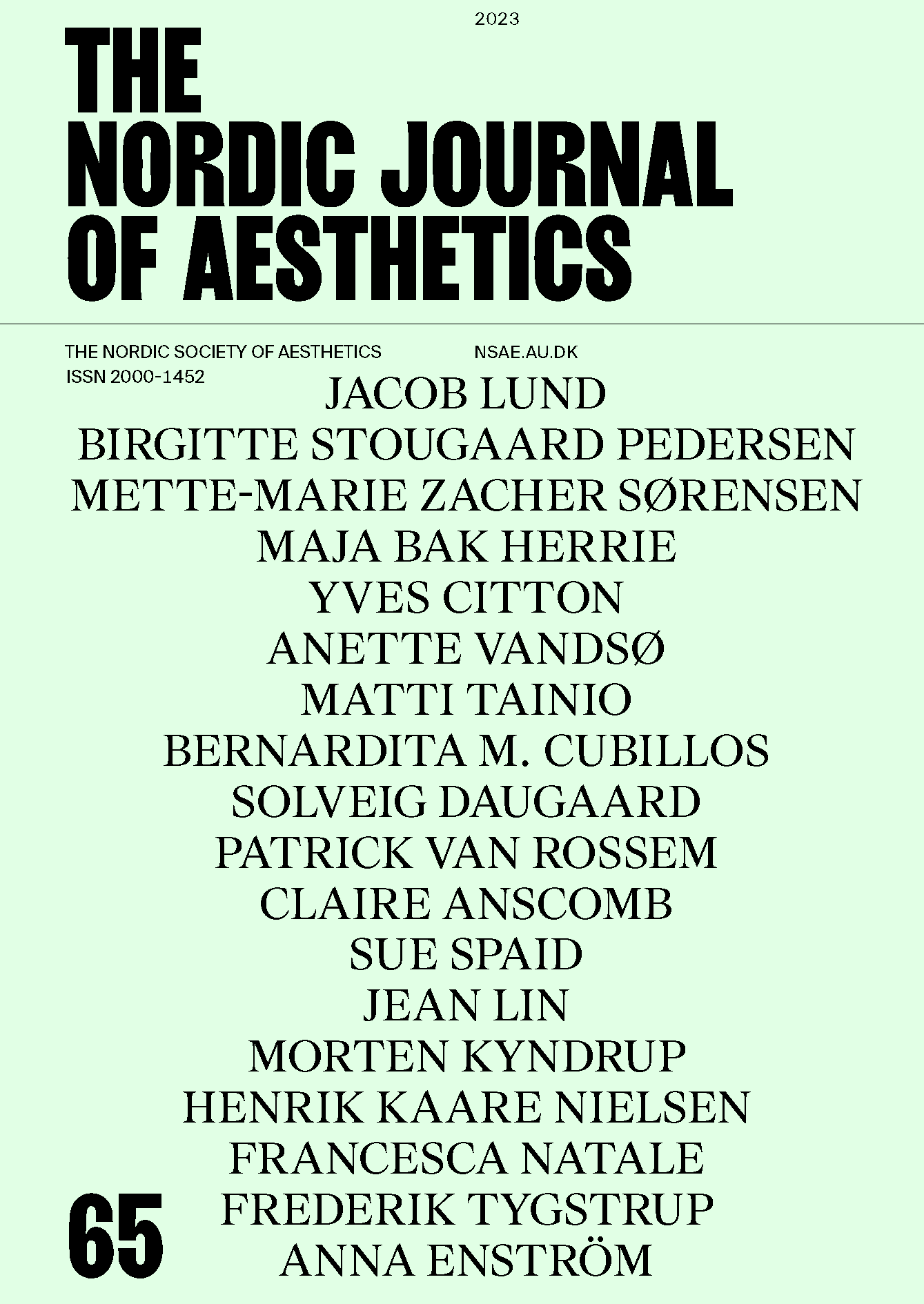Kant's "Aesthetic Idea": Towards an Aesthetics of Non-Attention
DOI:
https://doi.org/10.7146/nja.v32i65-66.140115Keywords:
Aesthetic Theory, Aesthetic Idea, Aesthetic Experience, DerridaAbstract
In Critique of Judgment, Kant introduces a foundational theme in modern aesthetics by identifying the judgment of taste as a particular mode of attention. In distinction to the mode of attention in mundane experience that works by determining how an intuition can be subsumed under a concept, aesthetic attention celebrates the pleasure associated with the “unison in the play of the powers of the mind” confronted with “the manifold in a thing.” Aesthetic attention, in other words, is an aesthetic subject’s attention to itself and to the pleasures derived from flexing the power of imagination. In this respect, Kant’s aesthetics reaffirms its cartesian core, the primordial positing of the thinking and reflective I as the necessary preposition for experience. This strict distribution of attention toward the secure epistemological architecture of object and subject seems to vacillate, however, in Kant’s brief discussion of artworks as purveyors of “aesthetic ideas.” This article discusses the de-limitation of attention instigated by the aesthetic idea. The aesthetic idea is associated with the artwork as an object, but it immediately transgresses the limits of the object through an array of analogical instantiations of “spirit.” On the other hand, aesthetic ideas are subjectively appreciated, but this appreciation similarly transgresses subjective cognition in an inexhaustible ramification of associative thinking. Developing these characteristics of the “aesthetic idea,” the article proposes to excavate from Critique of Judgment a mode of aesthetic sensibility that eventually challenges the Cartesian architecture of subject and object and thus reposits aesthetics in a field of relational interdependency.
References
Immanuel Kant, Critique of the Power of Judgment, translated by Paul Guyer (Cambridge: Cambridge University Press, 2000), 189, https://doi.org/10.1017/CBO9780511804656.
Michel Chaouli, “A Surfeit in Thinking: Kant’s Aesthetic Ideas,” The Yearbook of Comparative Literature 57 (2011).
Theodor W Adorno, Kants “Kritik der reinen Vernunft”, Hg. Rolf Tidemann (Frankfurt/M: Suhrkamp, 1995).
Jacques Derrida, “Economimesis,” Diacritics 11, vol. 2 (1981): 7, https://doi.org/10.2307/464726.
Henry Allison, Kant’s Theory of Taste (Cambridge: Cambridge University Press, 2001).
Günter Figal, Aesthetics as Phenomenology: The Appearance of Things, translated by Jerome Veith (Bloomington: Indiana University Press, 2010).
Downloads
Published
How to Cite
Issue
Section
License
Copyright (c) 2023 Frederik Tygstrup

This work is licensed under a Creative Commons Attribution 4.0 International License.
Authors who publish with this journal agree to the following terms:
- Authors retain copyright and grant the journal right of first publication with the work simultaneously licensed under a Creative Commons Attribution License that allows others to share the work with an acknowledgement of the work's authorship and initial publication in this journal.
- Authors are able to enter into separate, additional contractual arrangements for the non-exclusive distribution of the journal's published version of the work (e.g., post it to an institutional repository or publish it in a book), with an acknowledgement of its initial publication in this journal.
- Authors are permitted and encouraged to post their work online (e.g., in institutional repositories or on their website) prior to and during the submission process, as it can lead to productive exchanges, as well as earlier and greater citation of published work (See The Effect of Open Access).




